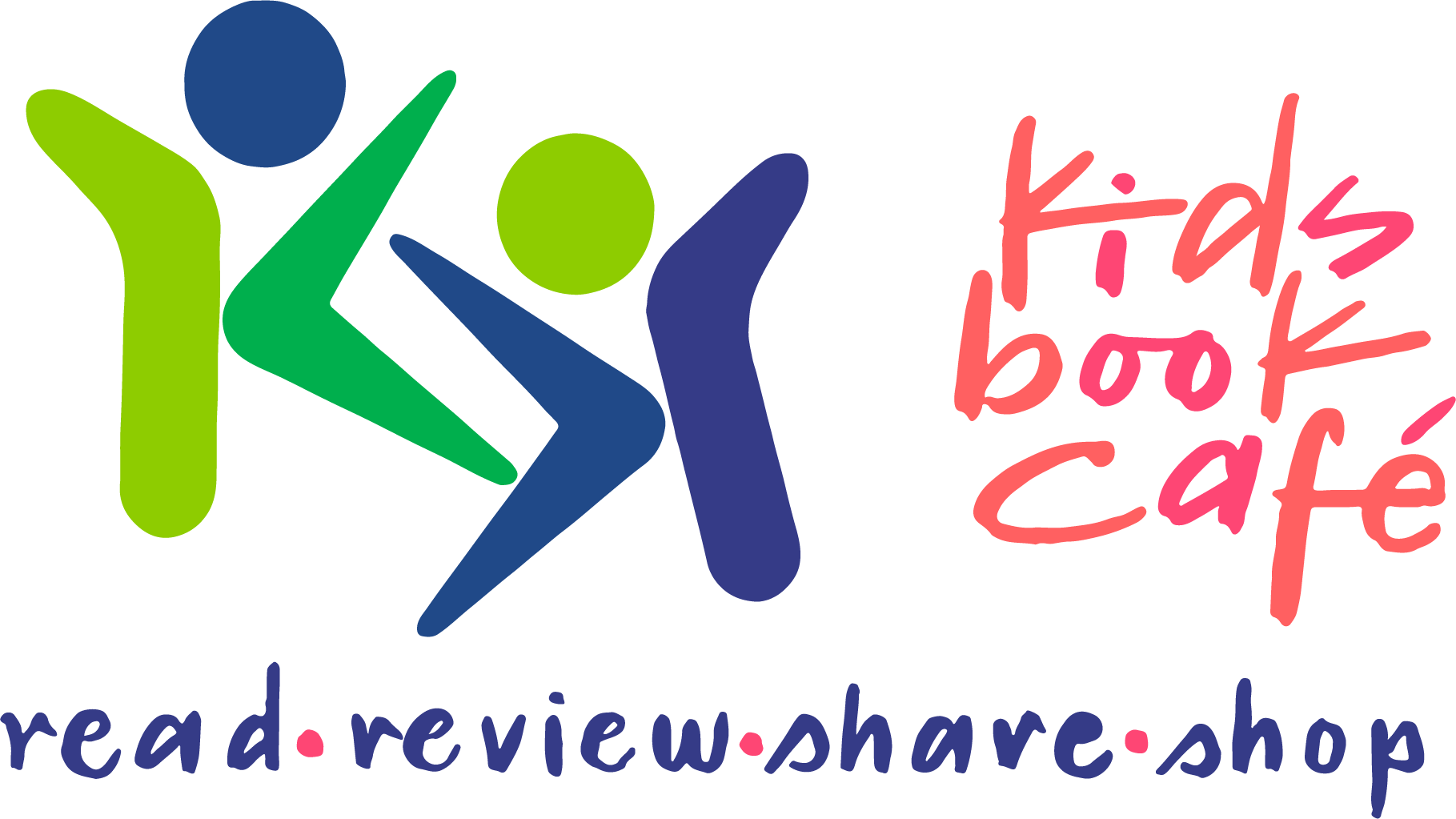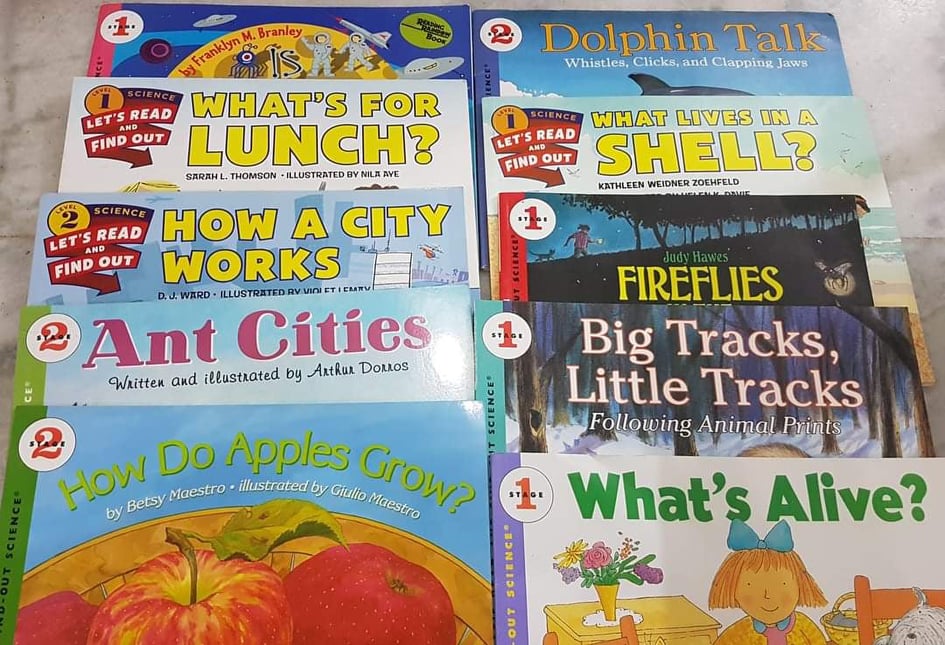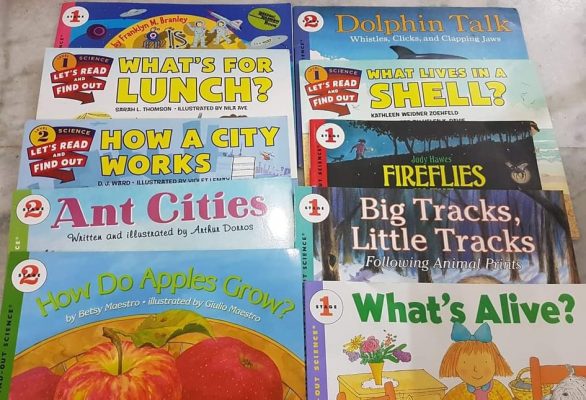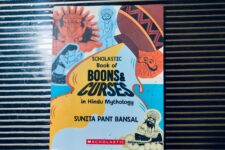My son, Neil, has always been a curious child, asking questions like why we poop when we don’t eat poop when he was all of 2.5 years old. That was when I bought the first non-fiction books for him, Lift-The-Flap: Very First Questions & Answers – What is Poo? and Usborne: Look Inside Your Body. As he grew up, his questions became more complex – are barnacles alive? Do they eat the humpback whale? How do tadpoles become frogs? Where do birds live? Do they sleep at night? I had a sudden panic attack not knowing how to answer his many questions.
When I reached out to Asha, she suggested that I buy an encyclopedia. Reading an encyclopedia at 3 yrs of age seemed crazy to me, but she explained that I didn’t have to read out everything to him, I could explain things via the pictures. I was finally convinced and bought our first encyclopedia, National Geographic – Little Kids First Big Book Of Birds. Neil absolutely adored the book, which made me realise that there is no minimum age for introducing and enjoying encyclopedias. In the past year (Neil is now 4.5 years old), as his questions have grown, I have also realised that encyclopedias can at times seem daunting and expensive – after all how many encyclopedias can you buy when the questions are endless? Non-fiction books like Zayn And Zoey or Magic School Bus serve the purpose of answering the questions equally well. Here are some of our favourite encyclopedias and non fiction series.
DK Encyclopedias – DK has the best encyclopedias ever, with amazing photographs and text that can be read out to kids as young as 4 years. What I love the most about DK encyclopedias is how they grow with your child – We started by out by just looking at the pictures, then read out some facts, and I’m sure we’ll still be exploring them when my child is 10 plus. We have the DK Ocean! Encyclopedia, DK Life Cycles Encyclopedia (Water Cycles is also very popular at kbc) and the DK Super Bug Encyclopedia, RHS The Magic and Mystery of Trees by DK (this is wonderful to understand and explain anything related to trees. The wonderful illustrations, and kid friendly text makes this one of our favorites books on plants and trees), Our World in Pictures: Trees, Leaves, Flowers & Seeds: A visual encyclopedia of the plant kingdom, all of which are dearly loved in our house. [Tulika has Earth’s Incredible Oceans (from The Magic and Mystery of Nature series) which we are eyeing next].
DK Findout! – This is an extremely good series for fact loving children. We have DK Findout! Human Body and it helped satisfy my little one’s curiosity and explain the working of the human body through interesting facts. The book explains interesting facts like how when we smell something not very nice, our brain tells us not to eat it – it then relates this concept to skunks and how they ward off predators, which I found a really amazing way to relate concepts, and it helps kids to understand things. DKfindout! Space Travel is another popular book in the series.
Nat Geo Little Kids First Big Book series – This series is the ideal first encyclopedia for kids. The text is age appropriate and introduces age appropriate concepts like herbivores and carnivores in the Dinosaurs book, nests and migration in the Birds book etc. Apart from the amazing photographs, the other awesome thing is the factsheet with each animal / bird / dinosaur – it tells you what they eat, how big they are compared to your hand or a full grown human etc. The many engaging questions and games they have all through the book are just the icing on the cake. My child absolutely adores this series, and we have Nat Geo Little Kids First Big book of Dinosaurs, Birds, Space, Weather and How.
Nat Geo Everything series – For children who want to dig deeper into a topic, Nat Geo has these individual books with more detailed facts and information. The text in these would be more suited for 5 plus, though the photographs can be enjoyed by all! For my bug crazy son, I have Everything Insects, and it has the strangest insect facts that you can think of, and no wonder then that it is a book he reaches out to read very often.
Nat Geo Readers – These Nat Geo books are levelled readers, meant to be read by the child individually. They are great for children like mine who enjoy reading non fiction more than fiction. The sentences are simple and easy to read, and each book focuses on only one topic. We have a Level 1 Reader – Go, Cub!, and a Level 4 Reader – Whales.
Usborne Look Inside series – These make for the perfect introduction to non fiction for toddlers, as they are sturdy board books with lift the flaps, that make them engaging. The text is kept to minimum, with context being conveyed mainly through picture placement. Each book in this series, be it Look Inside Your Body that allows kids to lift each layer of the body, or Look Inside How Things Work that explains how the vacuum cleaner sucks up the dirt, has completely floored me with the simplicity of explanation and ability to engage the child.
In this series we have Look Inside Our World (which is our absolute favourite),
Look Inside Seas And Oceans,
Look Inside Cars,
Look Inside Wild Weather,
Look Inside Space,
Look Inside An Airport,
Look Inside How Things Work,
Look Inside Things That Go,
Look Inside Your Body and
Look Inside Building Sites.
Look Inside What Happens When You Eat (Divya has this one and highly recommends it!)
Look Inside a Hospital has been highly highly recommended by Dr Sakshi Kohli to explain to her childoo what she does all day long. This book has also helped many childoos overcome the fear of visiting hospitals/doctors.
You also get Usborne Peep Inside series, that are meant for younger kids (2+) with much simpler text and concepts (Peep Inside Dinosaurs is very popular at kbc), and the Usborne See Inside series that is meant for slightly older kids (6+). We also have Usborne Lift The Flap – First Question And Answer books, on What Is Poo? and What Makes It Rain?, both of which are extremely good to explain otherwise difficult to explain topics to toddlers. First Questions and Answers: What is a Virus? is another book that we all might need during the pandemic. Usborne First Encyclopedia of Our World: What Were We Just Talking About? also gets recommended often! There are other books by Felicity Brooks in this Usborne First Encyclopedia series.
Usborne See Inside Inventions – has 60+ flaps
Usborne Big Picture Atlas – The perfect beginner atlas for children with big, bright pictures and photos of animals / food associated with each country. This atlas has provided us with innumerable starting points for conversations and taken us on many trips around the world.
The Usborne Big Book Of Sea Creatures – If you want toddlers to explore a topic in greater detail, the Usborne Big Book series is perfect. It has huge, four page foldouts that kids love (and hence should be bought only after your child is over the tearing phase). We have The Big Book Of Sea Creatures and the book has just the right amount of text, helping kids to identify different types of fish / whales etc without overwhelming them with too much information.
Usborne Spotter Guides – These are field guides perfect for taking on walks and helps kids identify the different types of Insects, Wildlife, Plants, etc. They are pocket sized, and my little one loves flipping through these on his own.
The Usborne Beginners series – These are perfect for preschoolers to dig deeper into a topic, and extremely affordable. We have a detailed post on this lovely series.
Let’s Read And Find Out Science – This is a levelled series, with Level 1 dealing with simple science concepts like what is alive, and Level 2 dealing with slightly more complicated concepts like what is a city. Both levels are easy to read and understand, and the illustrations make it very easy for kids to relate the book to their surroundings. For example, my 4 year old saw an ant hill in the park one day, and demanded to read the book Ant Cities. He was amazed to know that the hill he saw was just a small part of their city, and the real city was underground – the illustrations made it very easy to understand.
From Level 1 we have
What’s Alive?,
Big Tracks, Little Tracks,
Fireflies In The Night ,
What Lives In A Shell? and
What’s For Lunch?
From Level 2 we have
Ant Cities,
How A City Works,
How Do Apples Grow? and
Dolphin Talk.
Who Eats What? – Achira has shared a detailed review in the fb group with images here. Quoting her:
“Starts with a very simple example of the smallest food chain- an apple and you! Then it goes on to explain the concept of food chain step by step. A cow eats grass and we drink milk that then the cow gives. Very simple for kids to comprehend. It beautifully talks about the various food chains that exist on land and in sea. How they form a food web. Food chain is found wherever life is there.
What I loved the most about this book is the way the whole concept is broken into pieces which makes it enjoyable for the kids. We also correlated how if we don’t take care of our nature the food chain will be disrupted. Why is water cycle important? If there was no water cycle , there would be no rain, plants and animals would start dying because they won’t have food and water and ultimately the life would cease to exist. We even read the lovely book- How did that get in my lunchbox while reading this. Somehow we just got lost into the world of food and life!! We enjoyed it thoroughly!”
ADDED BY ASHA: OTHER BOOKS IN THE LET’S READ AND FIND OUT SERIES THAT GET ORDERED:
SIMPLE MACHINES (Let’s-Read-and-Find-Out Science 2)
What’s So Bad About Gasoline?: Let’s Read and Find out Science – 2
Let’s Go Rock Collecting: Let’s Read and Find out Science – 2
The Sky Is Full of Stars: Let’s Read and Find out Science – 2
Clouds: Let’s Read and Find out Science – 1
Richard Scarry’s What Do People Do All Day? – This book is unique, in that it is not an encyclopedia but it has helped us more than any other book in developing an understanding of the world and how it functions. The book explains the working of different things including a farm, post office, construction site, railways, etc. All of RICHARD SCARRY’S BOOKS are really engaging and make incredible first non fiction books for children.
Gail Gibbons’ books – They are the perfect mix of informative text and engaging illustrations. The books present facts laid out in a way that is easy to read, and which when combined with the beautiful illustrations make the topic very interesting for the children. We have The Honey Makers from this author, and it is one of our favourite books to read on bees. Recycle is a lovely book to explore what happens to all the Garbage once it leaves your house. The author begins by highlighting the problem of ever increasing waste and then informs the children about how they can help the environment by recycling. The process of recycling different materials like paper, plastic, aluminum cans, glass and polystyrene is also explained. What I have loved the most about the book is the wonderful illustrations which help in understanding the concepts really well. Sea Turtles is our latest addition.
Yuval Zommer’s Big Book series – This series is unique in its illustrations and the way the text is laid out. The illustrations are watercolor paintings and the text is organised in a question and answer format. The language used is very simple and easy to understand. We have The Big Book Of The Blue, which is divided into different chapters like sharks, whales, jellyfish, etc, each of them containing simple questions and answers that can easily be understood by preschoolers.
Miles Kelly Junior Picture Dictionary – This book covers everything under the sun and is the perfect book to introduce toddlers to non-fiction. It has big bright pictures with one word description and has something for every child – space, plants, sea creatures, life cycle, construction vehicles and much much more. This is always my first go to book to explain a new concept to my child as there is no simpler and better book to explain things.
ADDED BY ASHA: Achira, too highly recommends Miles Kelly’s books. She has shared some inside pages of these 2 books here. Quoting her:
We are huge fans of Miles Kelly books. The information is so to the point and crisp, not too long and then the illustrations are totally wow! We have 100 facts – Inventions and Deadly Creatures and Curious Questions and Answers on Animals. And we love them all dearly. The 100 Facts series has amazing fun facts, great pictures and some quizzes to keep the kids engaged. The book on inventions covers a vast range of topics and talks about how it has evolved over time.
My Encyclopedia of Very Important Things: For Little Learners Who Want to Know Everything (DKYR) Anubhuti highly recommends this for smallies and has shared a detailed review in the kbc fb group here.
The Curious Q&A book has cartoonish illustrations and super fun facts. Each page is like a different topic- what are senses, what is inside an animal, how many and so on. There are many in the Curious Questions & Answers series on different topics!
Zayn And Zoey series – This is a non fiction series featuring really cute twins who are curious about everything around them. They take the reader along with them as they explore more about Solar Power, Rainwater Harvesting, Reduce, Reuse and Recycle and much more. The really great thing about this series are the illustrations which are brilliant. They make it very easy for the kids to understand extremely complicated concepts – my 4 yr old easily understood that the solar panels on the roof generate electricity from the sun, which then travels through wires to power the television!
The Magic School Bus series (Scholastic) – If I had to pick one non fiction series that my child adores, it would be this one. A bus that transforms into magical things and explores literally anything you can imagine, is hard not to love! Miss Frizzle, her magic bus and the children go on many adventures in this lovely series, taking the reader along with them. The story is written such that the reader feels like they are a part of the story and are absolutely glued to the book like a thriller till the end. The language is simple and easy to understand, explaining complicated concepts in a very fun way.
If you wish to buy these books on Amazon, click here.
Let’s Investigate With Nate – This series is similar to the Magic School Bus in that it takes the reader on magical adventures while exploring concepts, however it is more interactive and reads more like a comic book. The illustrations are big, bright and colourful. I bought Let’s Investigate With Nate – The Water Cycle, and it was really easy to explain the entire concept of water cycle to my 4 year old. Seeing how much he enjoyed reading it, I got Let’s Investigate With Nate – The Life Cycle also, and that too is an absolutely wonderful book.
ADDED BY ASHA:
DK First Children’s Dictionary for 4-10 years. Many of our members (including Asha) grabbed this dictionary during the Scholastic Sale. It’s brilliant to increase your child’s vocabulary and GK. BRILLIANT MUST HAVE FOR EVERY CHILD. In fact, “it’s the first dictionary every child should have”, says Amardeep.
DK Picturepedia: an encyclopedia on every page for 5 yrs+ (on amazon is says 9-12 yrs) based on Gauri’s review in the fb group where you can see some inside pix:
This is one book which has mesmerized not only my boy but even my hubby and me. My boy has always been fond of reading encyclopedia but the heavy text sometimes gets difficult for him to comprehend and needs our help. This is one book where images are more and the information is to the point and easy to understand. And the quality of the images is extremely clear and amazing.
A large number of topics have been covered with crisp and easy to understand description and loads of pictures. If your childoo is an encyclopedia lover like mine then this book is a must have.
LITTLE EXPLORERS BOOKS are board books of 16 pages which are perfect for 1-3 years.
ANIMAL ATLAS – for different age groups.
DK WILDLIFE – for different age groups.
DK Knowledge Encyclopedia Plants and Fungi – for 9-12 years (208 pgs)
There are lots of other DK Knowledge Encyclopedia on different topics!
Lift the Flap Periodic Table . Quoting Sabah who has shared inside pages in the fb group here.
“My 4.5yo had a million questions about the elements used in cannons, the helium in balloons, and to my absolute pleasure co-related all our carbon and oxygen discussions (from our green reads and the evolution story) with the information mentioned oh-so-simply in this book. Do grab this one, it’s wonderful! Age group – 3.5+ (any age your child learns how plants grow, is a good age to introduce this one since there’s a whole green section)
The Periodic Table Book: A Visual Encyclopedia of the Elements (DK Our World in Pictures)
Periodic Table (DK Eyewitness)
Eyewitness The Elements (DK Eyewitness)
DK Our World in Pictures: Trees, Leaves, Flowers & Seeds: A visual encyclopedia of the plant kingdom – also recommended by Amardeep.
The Story of Inventions (Narrative Non Fiction) by Usborne Quoting Roshna who recommends it for 8 years+
Ever wondered how the daily usage appliances or things like televisions, computers, vaccum cleaners, jeans etc where invented ? What made inventors to invent these things and the story behind these inventions ? Well, this USBORNE book has answer for all the questions. When , why and how most of these gadgets or things we use daily were invented. These are real life stories behind these inventions. Good book for curious kids who are interested in inventions. Funny illustrations which makes this more interesting.
Amardeep too has THE STORY OF INVENTIONS (thanks to Roshna’s reco) and introduced it to Neil when he was around 6 years old. She has shared inside pages here in the kbc fb group. Quoting her:
“It does not state mere facts, but tells us a story about the invention, which makes it extremely interesting. I’ve learnt a few new things after reading just one story about chewing gum:
– Humans have been chewing natural gum for centuries. The sap from the “sapodilla” (chikoo) tree, called chicle, was chewed as gum in Mexico. (Do you remember eating chiclets as a child? It derived its name from “chicle”, the original gum!)
– In America, they had spruce gum or paraffin wax gum, that tasted very bad.
– After failed attempts at making tyres, and toys from chicle, a Mexican saw the craze that people had for chewing gum, and started adding flavours and other additives to chicle, to make chewing gum!
The book narrates the story behind the invention of toilets, X-Rays, television and much much more. Highly recommended for children who have endless questions on how things were invented. The book also highlight the difficult and often frustrating road towards inventions, helping children understand the importance of perseverance and not giving up, and also how mistakes can be wonderful at times!”
Wow Encyclopedia in Augmented Reality series by DREAMLAND is highly popular with our 6 years+ children. Titles:
Dinosaurs – Achira has this one. “Dinosaurs is an obsession that started when Divit was around 2. Who knew there is a dinosaur with every English alphabet! While we have loads of books on dinosaurs, this one is very age appropriate with detailed facts, fully loaded with information and interesting facts about dinosaurs. Starts with the dinosaurs in Triassic period and moves to Jurassic period and then to Cretaceous period. And what is best is it comes with an augmented reality feature. So with the app you can feel the dinosaurs coming to life!”
Secrets of the Ocean – Mahima has this one.
Animals
Many of our kbc members highly recommend this series called Encyclopedia: Amazing Questions and Answers by Om Books. They are very affordable and cover various topics. Ideal for 4-8 years. Also available in a Knowledge Bookset of 12 which makes an interesting gift!
Lift-the-Flap First Questions and Answers Where do babies come from? (Lift-the-Flap First Questions & Answers) for 4-6 years or even earlier when the question pops up! Priyanka highly recommends this book to answer all the q’s on the topic! She has shared inside pages here in the kbc fb group. Excerpt from her review:
What’s interesting is, this book talks about all babies- babies of animals, birds, insects, humans.. It answers questions to how babies are made, to when they are born, what they need, how they grow up and what a baby will look like in their adult hood, all spanning through different species. Nirvana now jumps with excitement when she says- look Amma, a baby turtle comes out of an egg and not from the tummy, OR a baby polar bear comes out of its mommy’s tummy. But wait, a baby butterfly?? Err . Amma, its a caterpillar that turns into a butterfly, so caterpillar IS a baby butterfly!
USBORNE LIFT THE FLAP FIRST QUESTION AND ANSWERS SERIES can be found here.
Lift-the-flap Questions and Answers about Growing Up (Questions & Answers)
LTF VERY FIRST QUESTIONS AND ANSWERS WHY SHOULD I GET DRESSED – kbc member Malini recommends it for kids who like to run naked and describes it for “no more running naked”!!
EVOLUTION – another topic that gets asked about very often.
The Story of Life: A First Book about Evolution comes highly highly recommended by many of our members for 4 years+
Life: The beautifully illustrated natural history book for kids by Elli Woollard for 4 years+ (48 pages) Achu has this one “gorgeous book” and has shared some inside pages in the fb group as well. Quoting her:
“Life” A Celebration of Earth’s History, written in a rhyming way by Elli Woollard and illustrated by Dorien Brouwers is a beautiful book to introduce evolution to the little ones. From the big bang, to the strange creatures that appeared in the sea, to animals that evolved on land, the dinosaurs, birds and finally humans, it has all…”
On The Origin of Species for 6/7 years+
Evolution for Smartypants by Anushka Ravishankar for 5-8 years
Amazing Evolution: The Journey of Life for 7 years+
Darwin’s Tree of Life (48 pages)
[Note from Team Kids Book Café: For your convenience, affiliate links (MARKED IN PINK) to some of the book titles & images have been added to enable you to buy the books from AMAZON, should you wish to! A very small amount of money comes to kidsbookcafe.com when you purchase a book via the amazon affiliate link provided (at absolutely no extra cost to you!). Do let us know if you need information about other children’s books by writing to asha@kidsbookcafe.com.]









